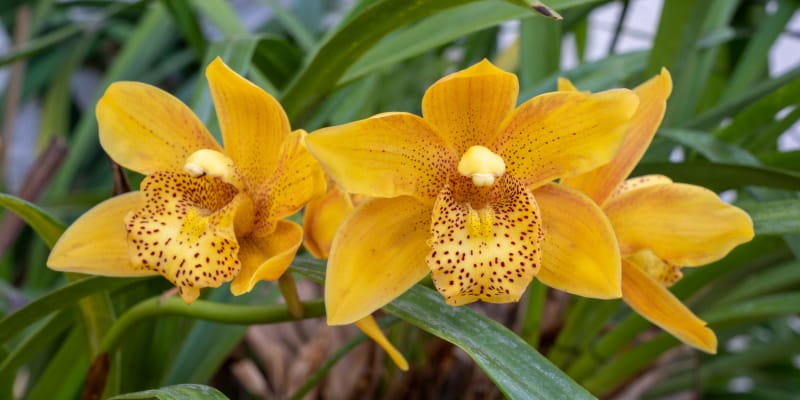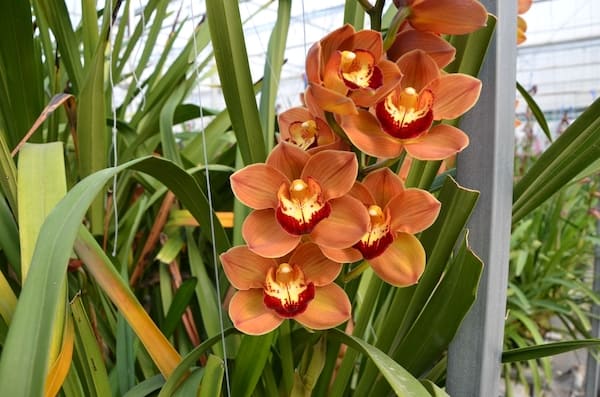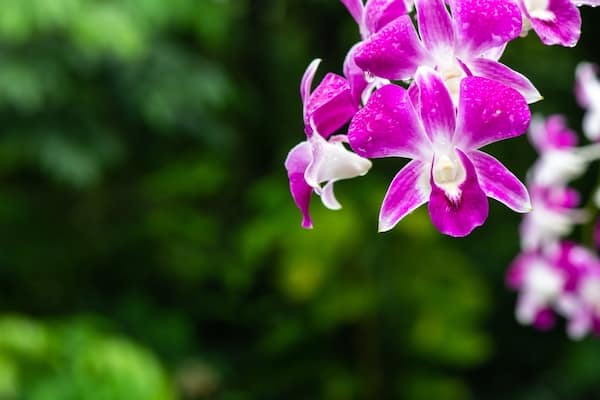
Why is my cymbidium orchid not flowering?
Our site is reader supported, this means we may earn a small commission from Amazon and other affiliates when you buy through links on our site.
There are several reasons why your cymbidium orchid is not flowering. These range from its natural growth cycle through to the environment you’re keeping it in and the care you’re giving it. The most likely reason it’s not producing any blooms is it probably not getting enough light; they need around 10-12 hours of indirect sunlight each day. Read on to learn more reasons why there are no blooms on your orchid.
Natural life cycle
The flowering period of cymbidium orchids
The flowering period of the cymbidium orchid is from around mid-autumn through to mid-spring. Don’t expect blooms to appear outside of these months. Sometimes they are forced and flower early, but the problem is, in the next season, they won’t flower as early, and people often mistake this for a problem and it’s simply just not the right time of year.
Problems in flower spike time
Without flower spikes, no flowers appear. The flower spike development time is in mid-to late summer. In these few weeks, it’s important that the cymbidium orchid has good light – but not direct sunlight as this can cause other issues with scorched leaves. The plants also need a distinct difference between daytime and night time temperature. The conditions outdoors at this time are suitable for good flower spike development. See my guide on How to grow and care for cymbidium orchids for more information on how to care for cymbidium orchids.
Another problem during the development of flower spikes is that the flower buds drop. If you notice this happening, move the orchid plant somewhere cooler. A temperature of around 15°C stops the buds from falling off. The flowers can then develop.
Too soon after dividing the orchid, they need time to recover as and develop
If you divided your orchid to propagate it during repotting, as I often do, remember that it takes two or more years for the new plant to start to produce blooms.
Environment
Cymbidium orchids aren’t too fussy about their environment. However, it’s worth knowing about what conditions they do prefer. Light and temperature especially play a role in how your plant develops.
Your cymbidium orchid may not be flowering because it’s in too much sunlight or the total opposite, too much shade. See my guide on How to grow and care for cymbidium orchids for details of all the conditions that these types of orchids like, as they do have different requirements to some other types of orchids. Check that the environment that you’re providing and make sure it meets its requirements.
Air circulation within and between your plants is also important to keep them developing properly. Poor air circulation in the roots due to a lack of space is a common problem and can prevent the plant from developing flowers. You need to repot your orchid every couple of years or when it outgrows its pot. See How to repot a cymbidium orchid for details on how to do this. Your orchid may breathe a sigh of relief at its new space and then produce blooms.
Care
Flowers may not be appearing on your cymbidium orchid due to your watering habits for it. It’s important to give it enough water during the budding period and then to reduce a bit during the flower development time. Visit the section on Water in How to grow and care for cymbidium orchids for more details.
Without water, the buds don’t develop correctly, leading to deformed flowers or no flowers at all.
If you want to try growing them on wood, rather than in pots. Check out my guide here.

